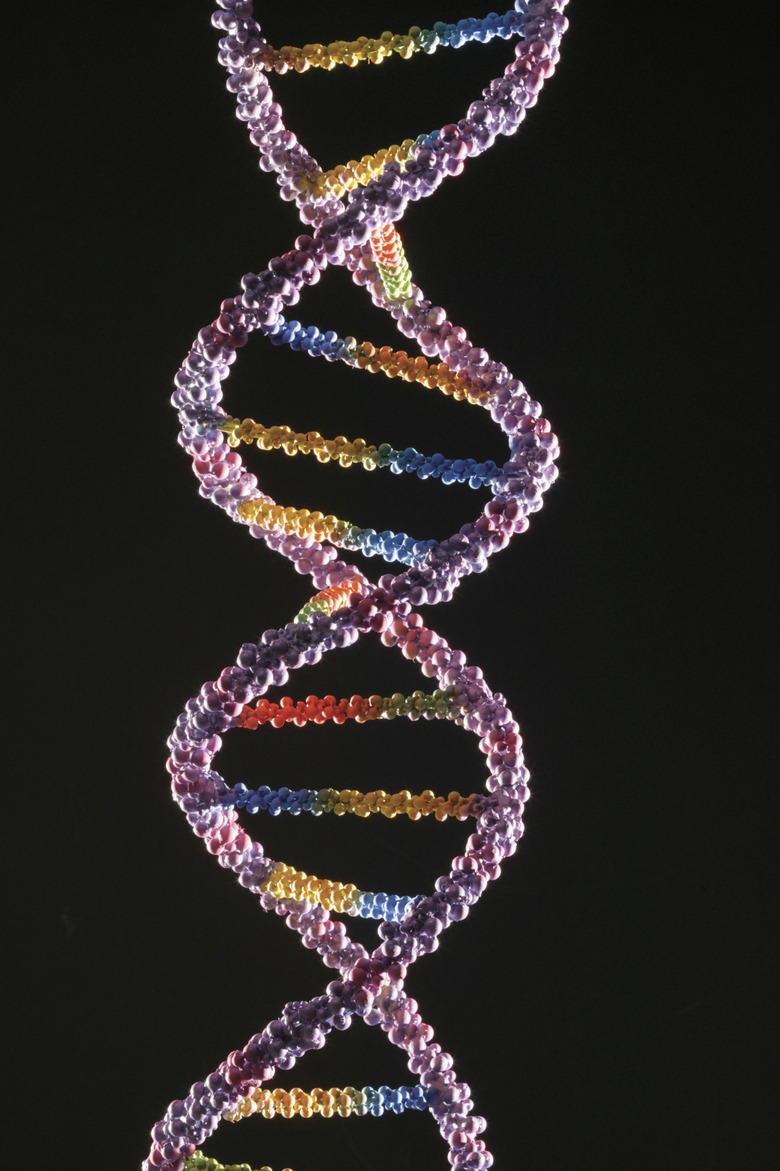RNA Mutation Vs. DNA Mutation
The genomes of most organisms are based on DNA. Some viruses such as those that cause the flu and HIV, however, have RNA-based genomes instead. In general, viral RNA genomes are much more mutation-prone than those based on DNA. This distinction is important because RNA-based viruses have repeatedly evolved resistance to drugs.
RNA Viruses and Disease
RNA Viruses and Disease
Mutation rates in RNA viruses are important because these viruses cause a terrible toll in terms of human death and disease. The flu and HIV, for example, are caused by viruses with RNA-based genomes. The high mutation rate means that they can rapidly evolve resistance to new drugs. Any given population of these viruses is very genetically diverse. This makes it very difficult for scientists to develop vaccines for the flu, for example. Because the influenza virus genome is diverse, scientists must often combine vaccines for several viral strains. And, because the flu virus genome changes constantly, vaccines that are effective during one flu season might be ineffective the next.
Mutation Rates
Mutation Rates
The higher mutation rates in RNA viruses ensure that they evolve more rapidly and could evolve resistance to drugs more readily than DNA-based viruses. Average mutation rates in RNA viruses are estimated to be about 100 times higher than those for DNA viruses. This rate is especially high because DNA viruses lack the sophisticated DNA repair mechanisms found in human and other animal cells. The enzymes that occur in RNA viruses and participate in copying viral genomes is a key reason for this difference. These enzymes lack the built-in capabilities to recognize DNA damage that enzymes in most organisms have.
Uracil and Thymine
Uracil and Thymine
Another interesting difference between RNA and DNA mutations involves the bases thymine, cytosine and uracil, typically represented as T, C and U in the DNA code. DNA uses thymine, while RNA uses uracil instead. Cytosine can sometimes spontaneously change to uracil. In DNA, this error will be detected because DNA doesn't ordinarily contain uracil; the cell has enzymes that can recognize and fix the substitution. In RNA, however, this kind of error cannot be detected because RNA ordinarily contains both cytosine and uracil bases. So, some mutations are less likely to be recognized and repaired in RNA viruses, and the mutation rate increases.
Retroviruses
Retroviruses
Retroviruses, another class of viruses known for their high mutation rates, are the causes of HIV and other serious diseases. These viruses take their RNA-based genome, use it to make DNA within a host cell and use the new DNA to replicate more viral RNA. This process is error-prone and results in an unusually high mutation rate. HIV, for example, has a mutation rate of 3.4 x 10^-5 errors per base pair each time its genome goes through this process. Retroviruses have higher mutation rates than most other viruses, including other RNA viruses. As a result, it's difficult to develop effective, long-lasting treatments for RNA viral diseases because they develop resistance so rapidly.
References
- Harvey Lodish, Arnold Berk et al: Molecular Cell Biology, 6th Edition, 2008
- Frontiers in Bioscience: Retroviral Mutation Rates and Reverse Transcriptase Fidelity
Cite This Article
MLA
Brennan, John. "RNA Mutation Vs. DNA Mutation" sciencing.com, https://www.sciencing.com/rna-mutation-vs-dna-mutation-3260/. 24 April 2017.
APA
Brennan, John. (2017, April 24). RNA Mutation Vs. DNA Mutation. sciencing.com. Retrieved from https://www.sciencing.com/rna-mutation-vs-dna-mutation-3260/
Chicago
Brennan, John. RNA Mutation Vs. DNA Mutation last modified August 30, 2022. https://www.sciencing.com/rna-mutation-vs-dna-mutation-3260/
